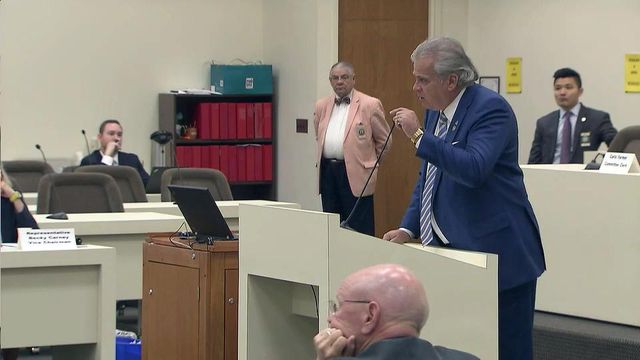Bill that could help Durham-Orange light rail meets with resistance from rural lawmkaers
A last-minute budget provision caps state funding for light rail projects at $500,000. A bill to remove that cap would revive the prospects for a light rail line in the Triangle.
Posted — UpdatedDuring last year's budget negotiations, a $500,000 cap for light rail projects appeared in the final draft of the compromise budget between the House and the Senate. The co-chairmen of the House Transportation Committee made it clear Tuesday that the measure originated in the Senate, and they were determined to reverse it.
However, Sen. Bill Rabon, R-Brunswick, said the idea for a cap came from the House. He said Tuesday that senior Senate leaders "100 percent" support removing the restriction.
That cap most directly affected the Durham-Orange project, which is expected to cost about $1.34 billion. The federal government would pay for much of the construction cost if the project is approved by the U.S. Department of Transportation, and local governments have raised their sales tax rates to pay for some of the cost.
But the state had been expected to chip in $138 million toward the project. Capping funding at $500,000 would leave the project hobbled, even if federal officials eventually sign off.
"It was bad policy when it was done last year, and I appreciate the opportunity to fix it this year," said Rep. Nelson Dollar, R-Wake, the House's senior budget chairman.
Under current STI rules, public transportation funding is limited to a 10 percent slice of money coming to a region. But the rules for light rail adopted last year further limited available funding. House Bill 988 puts the Durham-Orange project and other future light rail lines back into that competitive mix for funds.
"The STI law was a great framework for addressing our infrastructure needs in the state," said Rep. Becky Carney, R-Mecklenburg. "We have to recognize that infrastructure is not just about roads."
The bill has support from lawmakers who hail from urban and suburban areas, such as Torbett, Carney and Dollar. But members of the committee from rural areas immediately sided against it.
"I haven't seen any data here that supports the concept of light rail," said .Rep. Larry Yarborough, R-Person. "Everything I know about it is that it it's a feel-good proposition with very expensive cost per passenger-mile."
Taxpayers in rural areas, he said, should not be forced to underwrite transportation projects that will help only those in urban centers.
"I know people in my district wouldn't benefit from a light rail built somewhere else," Yarborough said.
Others, including Reps. Rayne Brown, R-Davison, and George Cleveland, R-Onslow, also chimed in against removing the cap.
"I'd like to know what data, what science, (supports) using a 19th-century technology. How is that going to trump spending on infrastructure?" Brown said. "This is going to be a mode of transportation that is going to have to be subsidized by people who will never use this. We are not England. We are not France. We don't have the density of population. This is a feel-good kind of thing, I didn't come here to do this."
Committee Co-chairman Frank Iler, R-Brunswick, told members they weren't approving any one particular project. Rather, he said, they were just making it possible for Orange and Durham counties to pursue the project.
The committee passed the measure on a voice vote. It is next due to be heard by the House Appropriations Committee and then on the House floor.
Related Topics
• Credits
Copyright 2024 by Capitol Broadcasting Company. All rights reserved. This material may not be published, broadcast, rewritten or redistributed.





